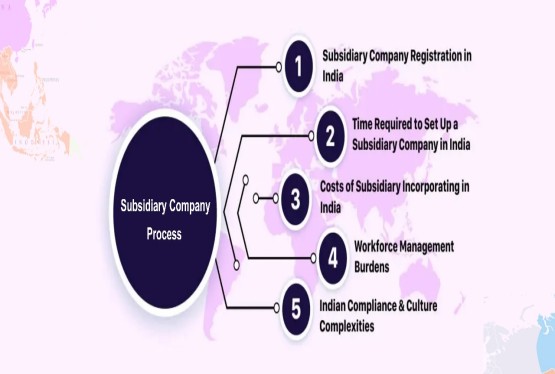An LLP is a kind of alternative corporate business structure that combines the freedom of a partnership with the advantages of limited liability for a company. Even if the partners elect to leave, an LLP may still be in operation. It has the ability to hold property in its name and enter into contracts. Let's now examine the minimal amount of money needed to launch an LLP.
Limited Liability Partnership
Although an LLP is a distinct legal organization with full accountability for its assets, the partners' liability is capped at the amount they have agreed to contribute to the LLP. Individual partners are also shielded from joint liability coming from another partner's illegal business decisions or misconduct because no partner is held responsible for the independent or illegal actions of other partners.
An agreement between the partners or between the partners and the LLP governs the rights and responsibilities of the partners in an LLP. On the other hand, the LLP is nonetheless accountable for its responsibilities and duties as a separate company. An LLP is called a "hybrid" between a corporation and a partnership because it combines elements of both corporate and partnership company structures.
LLP registration in India
An LLP is defined by the Limited Liability Partnership Act of 2008 as an organization created in accordance with its provisions. Therefore, the formation or registration process is required for LLP enterprises doing business in India. Through an online application-driven process, the Registrar of Companies (ROC) is the regulatory body in charge of LLP incorporation. However, it is necessary to complete all LLP Registration requirements, including the minimal eligibility requirements and supporting papers, before starting the incorporation procedure.
An LLP differs from a traditional partnership firm in that it has a distinct legal personality due to the necessary registration requirement. Traditional partnership firms have the option to register or not, unlike limited liability partnerships (LLPs), which are required to do so. A partnership firm's formation enables optional registration with the State's Registrar of Firms. However, the partnership deed, a fundamental instrument that establishes and validates the firm's existence, is what gives it its legal personality.
Minimum Requirement of Capital for starting LLP
The need for capital is a necessary precondition for the establishment of any business framework for trade; its significance cannot be overstated. A specific amount of initial capital is typically required at the time of incorporation or establishment by the rules governing different business vehicles.
The term "minimum capital" describes the sum of money required from the founders when the LLP is incorporated or from individuals when they are admitted as partners in an already-existing LLP.
No minimum capital contribution is required of the partners, and all matters pertaining to a limited liability partnership's capital contribution will be determined exclusively by the terms of the LLP agreement. Nothing in the Limited Liability Partnership Act of 2008 has been designated as minimum paid-up capital or minimum capital requirement because the legislature's goal in enacting the law was to simply give the LLP agreement that the parties entered into top priority. As a result, the fundamental requirements in all business structures, particularly capital contribution, have been left up to the stakeholders' discretion.
As a result, it can be said that, unlike corporations, limited liability partnerships do not have the idea of share capital; rather, in order to establish an LLP, partners must contribute a certain amount of money, known as partner's capital. Actually, a partner may contribute material, mobile, immovable, and/or intangible property, in addition to any other advantages the LLP may receive.
Process of LLP Registration in India
To guarantee adherence to the legal framework, the Limited Liability Partnership (LLP) registration procedure in India consists of multiple procedures. Here’s a full, step-by-step guide:
1. Acquire Director Identification Numbers (DIN) and Digital Signature Certificates (DSC): Since they must submit the LLP registration paperwork online, the designated partners must obtain DSCs. A DIN, or unique identification number for authorized partners, must also be obtained by partners. This can be done by submitting Form DIR-3.
2. Select and Accept LLP Name: Partners must select an appropriate name for the LLP and verify that it is available on the Ministry of Corporate Affairs (MCA) website. The chosen name must adhere to the LLP naming standards. It is valid for 20 days after approval.
3. Draft Agreement for LLP: The LLP Agreement, which specifies each partner's rights, obligations, and responsibilities, must be drafted by the partners. Details regarding the LLP's operations, profit-sharing, and decision-making procedures are also included in the agreement.
4. Documents of Incorporation: Partners must use Form FiLLiP (Form for Incorporation of Limited Liability Partnership) to submit the company registration paperwork to the MCA. Send in the subscription sheet and information on the partners' contributions with the form.
5. Fee Payment: Based on the permitted capital of the LLP, pay the required registration fees. The fees change based on how much each partner contributes.
6. Document Verification: The MCA checks the filed documents for correctness and regulatory compliance. Partners might have to make the necessary corrections and submit the documents again if any inconsistencies are discovered.
7. Certificate of Incorporation is issued: The Certificate of Incorporation is issued by the MCA following a successful verification process. This document attests to the LLP's registration and legal existence.
8. Submission of an LLP Agreement: Partners have 30 days from the date of incorporation to file the LLP Agreement after obtaining the Certificate of Incorporation. For this reason, Form 3 must be submitted.
9. Application of PAN and TAN: Apply for the newly registered LLP's Tax Deduction and Collection Account Number (TAN) and Permanent Account Number (PAN).
10. Annual Filings and Compliance: Following registration, limited liability partnerships must adhere to yearly filing obligations, which include submitting the Statement of Accounts and Solvency (Form 8) and the Annual Return (Form 11).
FAQs
Q1. Can the capital of an LLP be increased later?
Ans. Yes, the capital contribution in an LLP can be increased at any time by amending the LLP Agreement. Such changes must be filed with the Registrar of Companies (RoC).
Q2. Is stamp duty applicable on LLP capital?
Ans. Yes, stamp duty is applicable on the LLP Agreement, and it is based on the capital contribution. The rate varies depending on the state where the LLP is registered.
Q3. Are partners required to contribute equally to the LLP’s capital?
Ans. No, partners are not required to contribute equally. The capital contribution of each partner is determined mutually and outlined in the LLP Agreement.
Q4. Does the LLP need to maintain records of capital contributions?
Ans. Yes, LLPs are required to maintain proper records of all capital contributions and changes, as these details must be reflected in the financial statements and filed with the RoC when necessary.












_crop10_thumb.jpg)





_crop10_thumb.jpg)




























-Form_crop10_thumb.jpg)

_crop10_thumb.jpg)























_learn_crop10_thumb.jpeg)































_crop10_thumb.jpg)

_crop10_thumb.jpg)





















_crop10_thumb.jpg)















_for_Foreign_Directors_learn_crop10_thumb.jpeg)




_Act,_2015_learn_crop10_thumb.jpg)



































_learn_crop10_thumb.jpg)


























